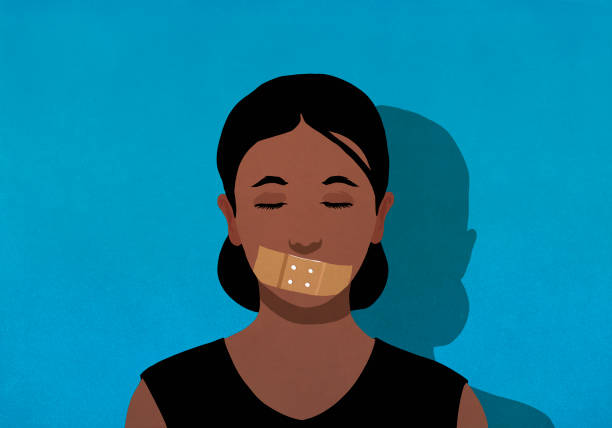By: Sahra Mohamed
The way the media covers abuse and harassment cases tend to reveal biases related to gender, race, and power dynamics. One of the most recent examples of this is the defamation lawsuit filed by actor Justin Baldoni against Blake Lively and her husband, Ryan Reynolds. Although the case isn’t set to go to trial until March 2026, it has already sparked debates across both conservative and liberal circles. However, the intense media attention on this lawsuit is the opposite of how female victims, especially those from marginalized groups, are treated. This shows the ongoing inequality in how abuse victims are covered in the media and why some cases receive more attention than others. Recent studies have revealed disparities in how media outlets portray victims of crime, when it comes to race and ethnicity. A report by the Equal Justice Initiative (EJI) found that media coverage was 50% more likely to refer to White defendants by name compared to Black defendants. Mugshots were used in 45% of cases involving Black individuals accused of crimes, compared to only 8% for White defendants.
In the case of Baldoni versus Lively, media publications were quick to defend Blake, while the audience and content creators were vocal in supporting Justin’s innocence as more evidence emerged. Even though the trial is still a year away, this case has gained alot of support from both right-wing and left-wing media figures, with many expressing empathy for Baldoni’s situation. However, the disproportionate attention to Baldoni’s experience raises important questions about why the media tends to elevate the voices of some victims while downplaying or neglecting others. This selective coverage becomes even more apparent when examining the treatment of other abuse cases, such as Cassie Ventura’s.
Cassie Ventura, the singer and model, filed a lawsuit against music mogul Sean “Diddy” Combs in November 2023, accusing him of years of abuse and manipulation. Despite the severity of the allegations, including physical, sexual, and emotional abuse, the media, including content creators, initially did not provide the same level of scrutiny that other high-profile abuse cases received. In the eyes of the public, her claims were also questioned, casting doubt on the validity of her experience despite the disturbing nature of her legal complaint. The narrative began to shift when video footage surfaced of Diddy allegedly attacking Cassie in a hotel hallway, providing visual evidence that support her detailed claims. The release of this footage was a turning point in the public’s perception, leading many to reconsider the seriousness of her allegations. Diddy later apologized on Instagram after initially denying all of the allegations. As Cassie herself stated, “My only ask is that EVERYONE open your heart to believing victims the first time.” This delayed empathy reveals the media’s treatment of abuse survivors, especially women of color.
This dynamic can be seen in the case of Meghan Markle, whose treatment by the media has been scrutinized since she and her husband, Prince Harry, stepped back from royal duties in 2020. Markle has publicly shared her struggles with mental health, including thoughts of suicide during her pregnancy with their first child, Archie. Despite the heavy weight of her experiences, the UK media’s portrayal of Markle was rooted in racial abuse. Even with the documented emotional toll and public revelations about her mental health, Markle’s story was met with widespread skepticism. Numerous tabloids questioned her motives, dismissing her claims as exaggerated or attention-seeking. Many media outlets, including the British press, and right-wing journalists like Megyn Kelly and other conservative commentators, have significantly downplayed Markle’s struggles inhumanely. In 2021, Megyn Kelly dismissed Markle’s claims in an interview, suggesting that Markle’s complaints about racism, severe mental health issues, and overall mistreatment were exaggerated. Click here for more details.
Her experience is very different from male victims like Baldoni, whose allegations received more empathy and support from the media. The way Markle’s struggles were minimized highlights the intersection of race, gender, and media bias, where women of color, regardless of their fame, continue to face unfair treatment. The media’s tendency to downplay the experiences of women, becomes even more apparent when comparing the coverage of male victims of abuse. The extensive attention given to Justin Baldoni’s defamation lawsuit, despite the long wait before trial, is different when compared to the coverage of powerful men like Diddy. His victims continue to speak out, with his trial set to begin on May 5, 2025. The fascination of content creators with stories like Blake Lively’s, while remaining silent on more severe cases, reflects an imbalance. This pattern highlights broader societal trends where White men are afforded more credibility and empathy than their female counterparts. In my previous article, The Silence of Hollywood: Accountability in the Face of Abuse, I discussed how the entertainment industry selectively holds individuals accountable, with the case of Nate Parker, a black director and writer, serving as an example of how Black men facing accusations are often denied the same level of support or empathy.
This pattern is seen not just in the entertainment industry but also in the media’s coverage of other high-profile cases. Despite facing serious assault allegations, which he admitted to as reported in Rolling Stone, Jonathan Majors continues participating in interviews and promoting his latest film. This is vastly different from the treatment of Parker, who, despite being proven innocent, was ridiculed in interviews and faced harsher consequences. Majors, who was recently featured on the cover of The Hollywood Reporter, highlights the inconsistency in media responses, where high-profile male perpetrators often receive credibility and support, while female victims are frequently dismissed and ignored.
This disparity in coverage reveals an uncomfortable truth: certain victims receive more attention than others based on race, gender, and social standing. The public empathy given to figures like Justin Baldoni and Jonathan Majors is very different from the treatment of victims such as Meghan Markle and Cassie, showcasing the reality of unequal justice. The media’s inconsistent handling of abuse cases prioritizes a victim’s identity over the severity of the allegations, resulting in an imbalanced portrayal of their experiences. As more women come forward with their own stories of abuse, it is imperative for the media and content creators to practice due diligence by ensuring fair, consistent, and empathetic coverage for all victims, regardless of gender or race. The treatment of female victims highlights how media narratives influence public perception and reinforce systemic biases. Allegations against public figures should be evaluated based on their seriousness, not through a lens of privilege that disproportionately undermines marginalized victims.



Leave a Reply